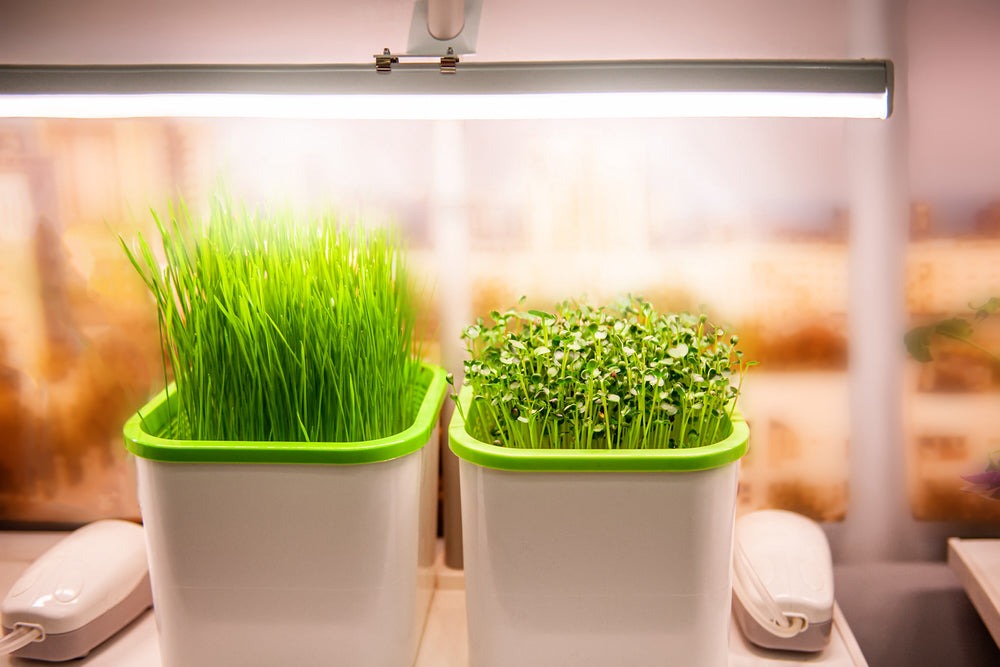Technology in the garden - grow lights for indoor plants

As the light level drops, artificial lighting can be a good way of supplementing the amount of light plants get and can also be used to grow plants in darker corners of the house, or rooms with no windows.
Try to choose specialist horticultural lighting. LED and fluorescent grow lights produce the full-spectrum light (which has both blue and red wavelengths) that plants need to grow. Plants absorb mostly blue and red light to grow and flower. Blue light generally stimulates growth, while red light is important for growth and flower production.
LED lights can be more expensive than fluorescents, but they use half the electricity and last longer. They also give off less heat, so they are safe to put near plants. Plant friendly LED bulbs are called high output LED. These are usually twice as bright as standard LED lights and ideal for plants that need particularly sunny conditions such as rosemary.
T5 High Output fluorescent tube bulbs, available from horticulture suppliers, can produce a high enough light level to encourage good growth. Although they’re less expensive, they’re not as energy efficient as LED lighting. If using fluorescent tubes to grow flowering plants, you’ll need a combination of red and blue tubes for growth and flowering.
Matching the amount and intensity of light to the plants is important. Plants from low light habitats such as ferns will need lower light levels but if you want plants to flower or fruit, you’ll need over 16 hours of light. This may need adjusting by moving plants closer to the light source. If you want to nurture plants usually grown outside, such as herbs or seedlings, grow lights are particularly useful
Single bulbs or tubes are an option but for peace of mind there are a variety of kits available which are ideal if you’re just starting out on your indoor gardening journey.











